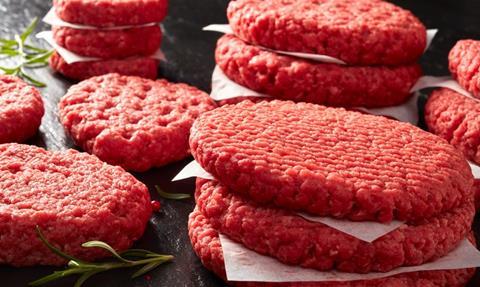According to the latest Kantar figures, burger sales climbed by 13% during the first bank holiday in May.

Grocery inflation is now at 3.1% for the 12-week period ending 12th May 2024, while grocery price inflation fell for the fifteenth month in a row to 2.4%, the lowest level since October 2021. Take-home grocery sales rose by 2.9% over the four weeks to 12th May.
Tesco took 27.6% of the market, up 0.5% since last year, marking its largest annual share gain since January 2022. The retailer's sales growth was matched by Sainsbury's at 5.6%.
Asda held 13.1% of the grocery market, while Aldi and Morrisons captured 10% and 8.6% respectively. Fuelled by its loyalty scheme and bakery counters, Lidl reached a market share of 8.1%.
Ocado was the fastest growing retailer, with sales up by 12.4%, which Kantar said was "well ahead" of the total online market, which saw sales up by 5.4%.
Convenience specialist Co-op's share of the market is now 5.4%. Both Waitrose and Iceland held market share steady, with the former remaining flat at 4.6% and the latter at 2.3%.
Fraser McKevitt, head of retail and consumer insight at Kantar, said: “It seems that many barbecues were given their first outings of the year during the most recent bank holiday weekend. Burger sales climbed by 13%, while beer and wine sales shot up by 9% and 21% respectively versus the Friday, Saturday and Sunday of the week before.”
McKevitt continued: “Grocery price inflation is gradually returning to what we would consider more normal levels. It’s now sitting only 0.8 percentage points higher than the 10-year average of 1.6% between 2012 and 2021, which is just before prices began to climb.
“Typically, an inflation rate of around 3% is when we start to see marked changes in consumers’ behaviour, with shoppers trading down to cheaper items when the rate goes above this line and vice versa when the rate drops. However, after nearly two and a half years of rapidly rising prices, it could take a bit longer for shoppers to unwind the habits they have learnt to help them manage the cost of living crisis. Own-label lines are proving resilient, for example, and they are still growing faster than brands, making up over half (52%) of total spending. Sales of premium own label ranges continue to increase too, up by 9.9% compared with a year ago.”





